Abstract
OBJECTIVES--To evaluate a change in antenatal care policy to reduce antenatal clinic visits, whereby low risk multiparous women were managed by the primary care team and seen at booking and at 41 weeks' gestation at the consultant antenatal clinic. DESIGN--Comparative study of low risk multiparous women retrospectively identified through the Oxford obstetric data system and cared for by three consultants who changed their policy (group A) or three consultants who maintained their routine care (group B). SETTING--Oxfordshire Health District. SUBJECTS--2153 low risk multiparous women (1079 group A, 1074 group B) booked for consultant care at John Radcliffe Maternity Hospital between August 1985 and July 1987. MAIN MEASURES--Comparison of pregnancy outcomes, satisfaction with care, and clinic waiting times, during one year before and after the policy change (year 1, year 2). RESULTS--The proportion of women in group A with only one or two consultant clinic visits increased from 19.9% to 57.9% between years 1 and 2 (p < 0.001). Clinic waiting times did not improve. Of five perinatal deaths in group A, one (from postmaturity) could possibly be attributed to the policy change. The proportion of women reaching 42 weeks' gestation rose from 4.7% to 9.2% (p < 0.01); the proportion fully satisfied with their care rose from 68.4% to 82.1% (p < 0.025). No such changes were seen in group B. CONCLUSIONS--The change in policy was successful in reducing hospital antenatal clinic visits. The exercise identified dilemmas around evaluating changes in antenatal care settings. IMPLICATIONS--Criteria to test policy objectives should be selected carefully and rare events assessed prospectively in order to detect problems early.
Full text
PDF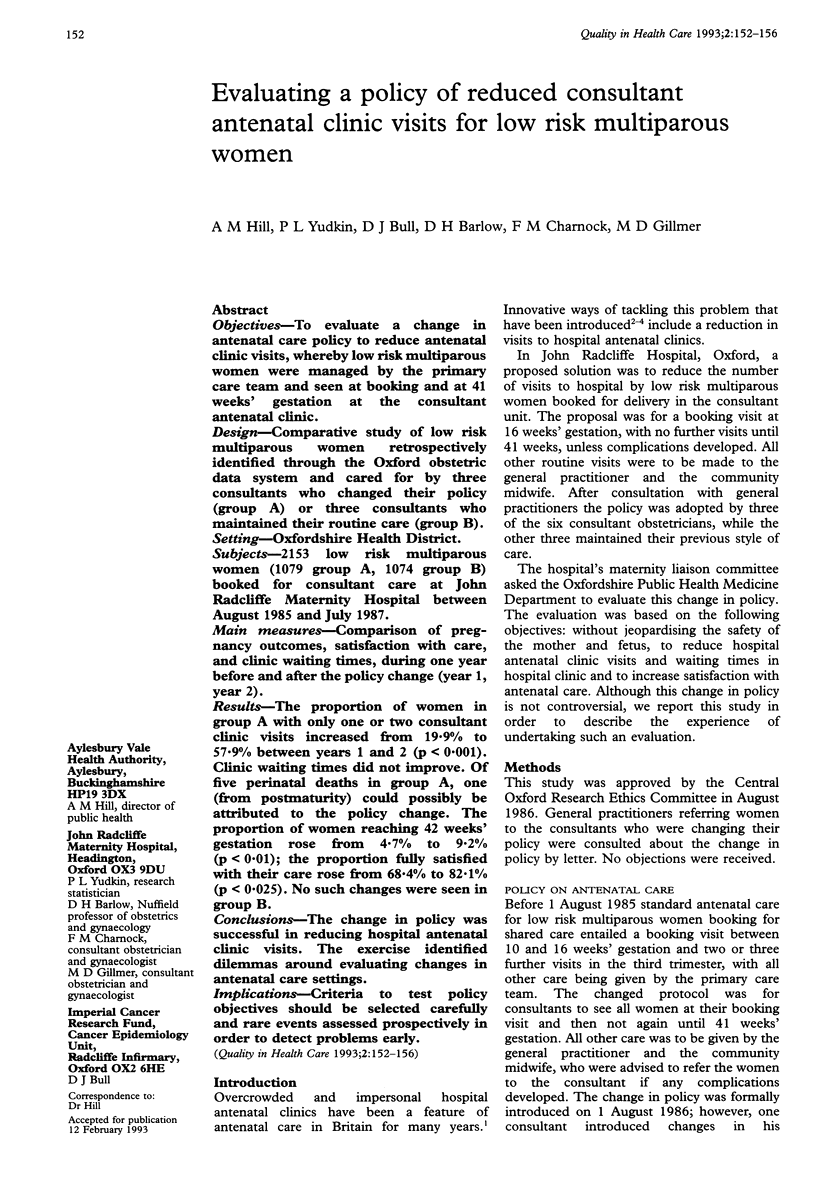
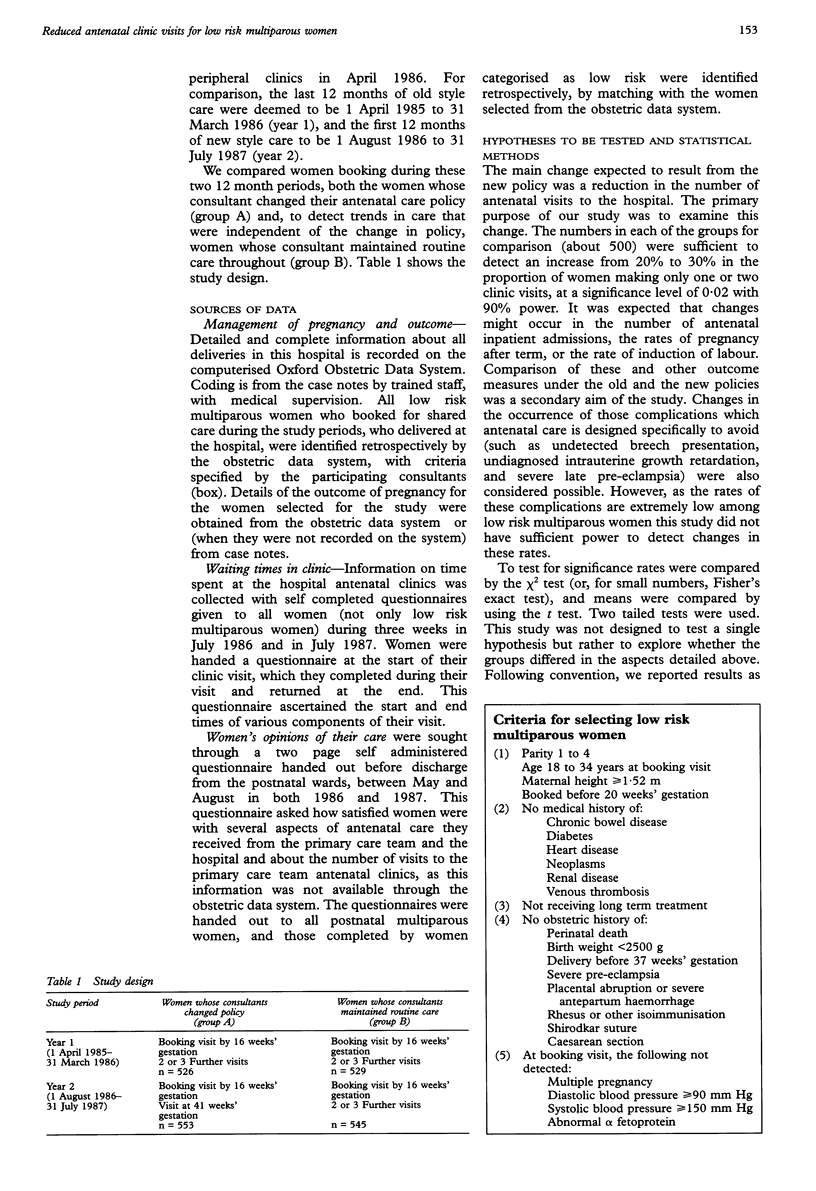
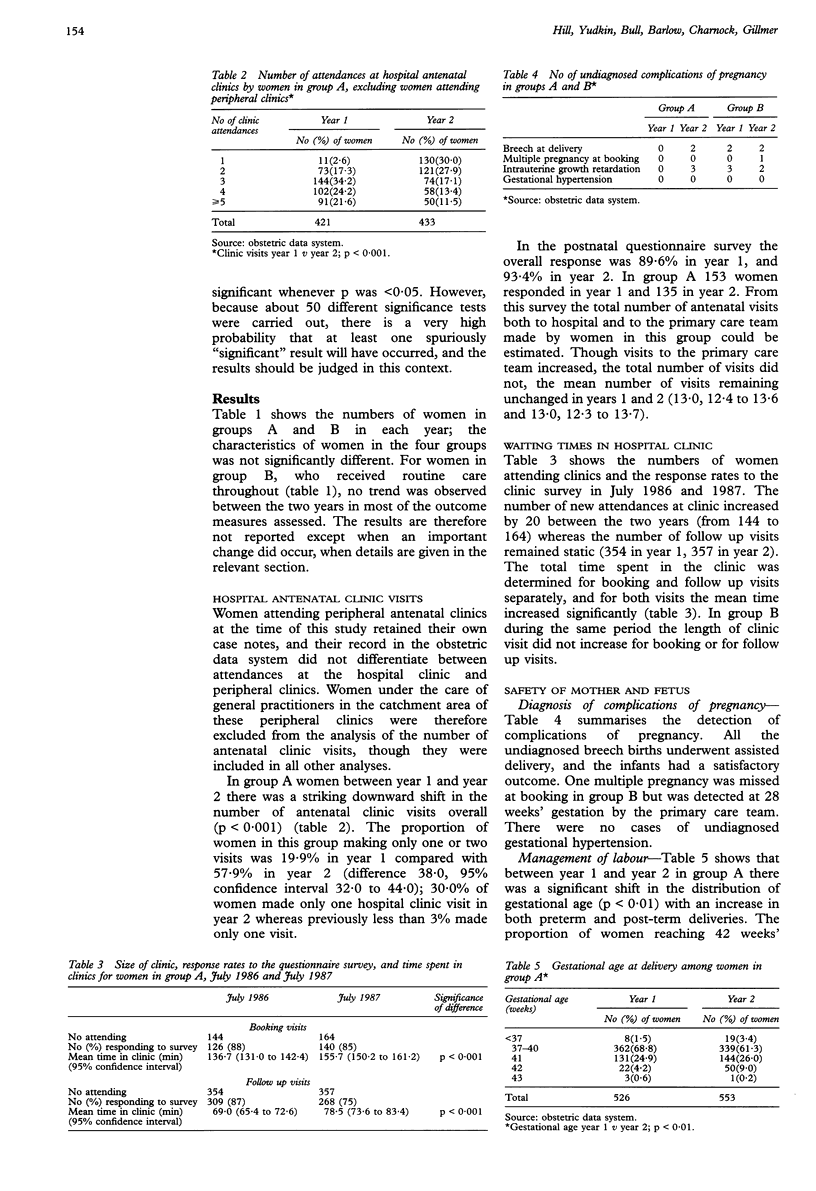
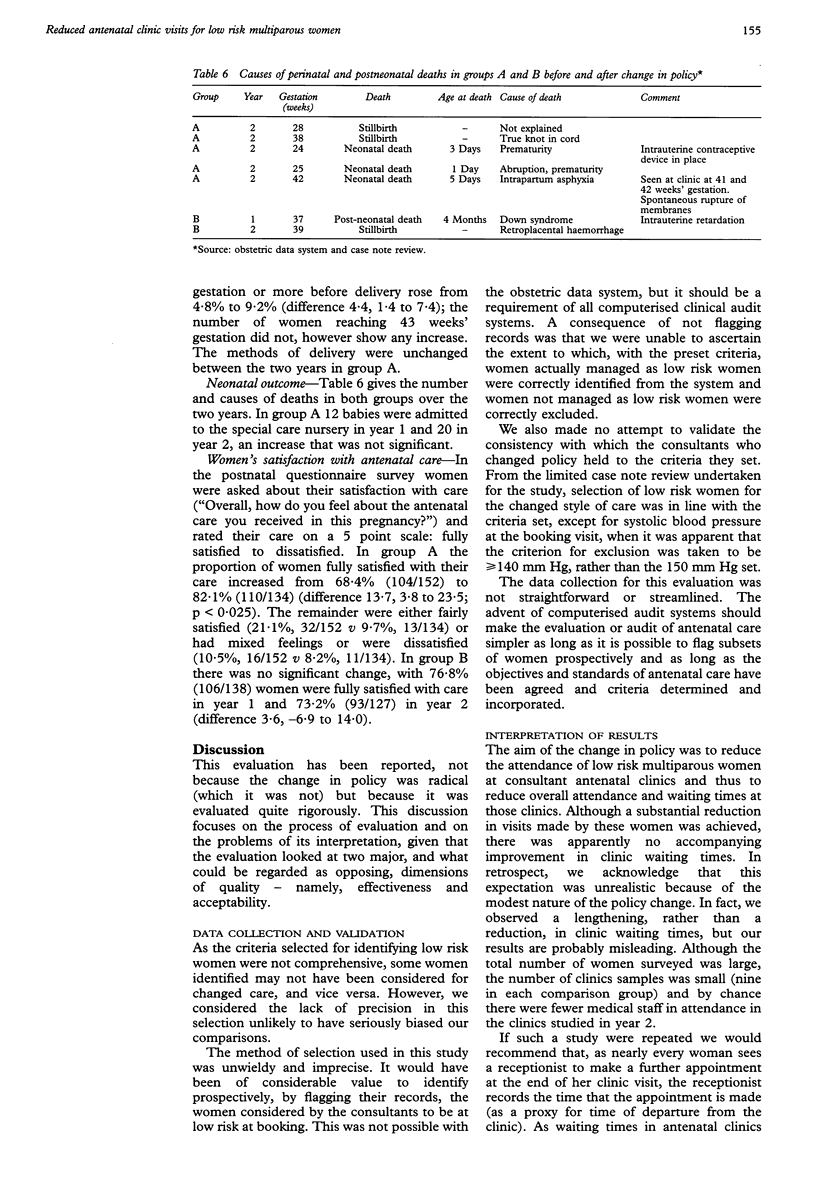
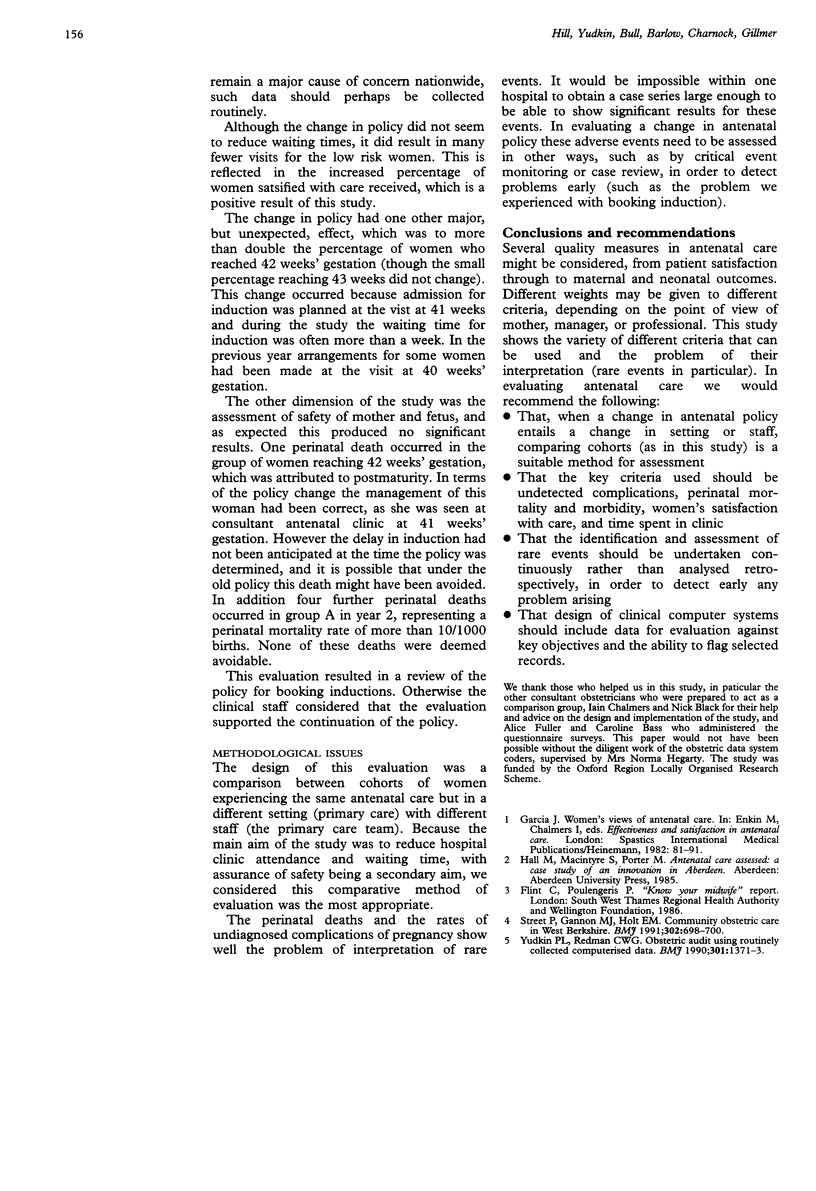
Selected References
These references are in PubMed. This may not be the complete list of references from this article.
- Street P., Gannon M. J., Holt E. M. Community obstetric care in West Berkshire. BMJ. 1991 Mar 23;302(6778):698–700. doi: 10.1136/bmj.302.6778.698. [DOI] [PMC free article] [PubMed] [Google Scholar]
- Yudkin P. L., Redman C. W. Obstetric audit using routinely collected computerised data. BMJ. 1990 Dec 15;301(6765):1371–1373. doi: 10.1136/bmj.301.6765.1371. [DOI] [PMC free article] [PubMed] [Google Scholar]


